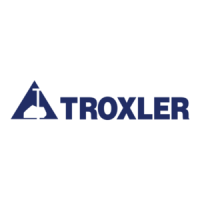C
C
a
a
l
l
i
i
b
b
r
r
a
a
t
t
i
i
o
o
n
n
T
T
r
r
a
a
n
n
s
s
f
f
e
e
r
r
During paving operations several asphalt content gauges may be
used for quality control of the asphalt mix . These gauges usually
include one central “master” gauge and numerous “field” gauges.
When more than one gauge is used to determine the asphalt
content of a single asphalt mix, each gauge must be separately
calibrated for that mix. This process can involve preparing
calibration samples and manually calibrating each gauge.
Performing individual gauge calibrations is labor intensive, time
consuming and may involve transporting the gauges between
laboratories. Additionally, the gauges will be out of use during
the time required for calibration.
Calibration Transfer overcomes many of the problems associated
with using multiple gauges for one particular mix design. This
procedure allows the transfer of a central “master” gauge
calibration to multiple “field” gauges, without the need for
individual gauge calibrations. Calibration transfer reduces gauge
downtime, reduces labor and helps ensure more uniform asphalt
content measurements among all gauges. Calibration transfer
also reduces the chance of error produced by the sample
preparation techniques preferred by different operators.
The “master” gauge resides in the central laboratory and is used
to perform the different mix calibrations. The “field” gauge
resides in the field laboratory and receives the calibration
constants from the “master” gauge for the different mix designs.
The “field” gauge does not perform any calibrations after the
cross calibration procedure.
The first step of the calibration transfer process is the cross
calibration of the “master” gauge to all of the “field” gauges. This
procedure need only be performed once for each “field” gauge. A
minimum of five calibration samples will be used to obtain an
initial relational curve (or correlation) between the “master” and
“field” gauges. These samples must include one sample with at
least 0.5% asphalt above the normal mix range and one sample
with at least 0.5% asphalt below the normal mix range. The five
calibration samples must be prepared and measured on the
same day.
If preparing sealed (special) calibration samples (see Appendix
E) that span the mix range, these samples may be used to
determine the relational curve. For each “field” system,

